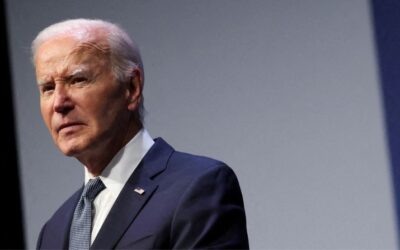This story comes through a content-sharing partnership with Wyoming Public Radio.
***As of Feb. 1, the bill to exempt child care facilities from property taxes failed in the House, and the bill to create early childhood development special districts had yet to be heard in committee.
Child care is a top issue for some Teton County officials. One of the county’s state representatives, Mike Yin (D-Jackson), introduced two bills to address the crisis exposed by the pandemic.
One bill, which was introduced to the House Education committee, would create early childhood development special districts. The second would exempt property tax on child care facilities and is headed for a House vote.
Teton County Commissioner Natalia Macker, a mother of three young children, helped draft the bills. Wyoming Public Radio’s Kamila Kudelska spoke with Macker on why it is important to focus on early child care.
The following interview transcript has been edited for clarity and brevity.
Natalia Macker: In Wyoming, one in three residents live in a child care desert, where there aren’t enough child care spots for the number of children under the age of five. And in my community, certainly in Teton County, it’s probably much higher than that. And there’s a great demand. But all across our state, there are communities that don’t have enough child care, or that are facing child care challenges of different stripes that are unique to their community. And I think the reason why this bill is so exciting as a place to start the dialogue about how we can support child care across our state, is that it keeps the focus on the local community deciding what it needs for itself.
Kamila Kudelska/Wyoming Public Radio: Can you explain when you say child care, what does that entail?
Macker: In the space of this bill, it can mean a lot of different things. For most of us, we probably say child care and we think of a facility or a center, where parents can take their kids for the majority of the work day. That certainly could be a solution that an early education district might propose. But in Wyoming, in such a rural state, with very rural counties, other alternatives could exist. There are home based daycares. There could be community created solutions. Employers create child care centers on their site. I know that’s happening in multiple places around the state, where school districts or hospitals, or other employers, in order to attract workers and retain their workforce, are providing child care on site. So they’re really, particularly for early education, there isn’t one size fits all.
Early education also is parent education, and helping parents who maybe want to come for just a couple of hours a day with their kid and have some enriching activities, and learn what they want to learn about those early years. Because the development from birth to five, and especially from birth to three are really critical years in a child’s development and have impacts on their outcomes in life later. And so giving communities an opportunity to look at what their needs are, from a child care perspective, to enable parents to be in the workforce, but also from a child development perspective, to arm parents with information they need, and find what works for their community and let the community come together locally and make those choices.
WPM: Can you describe what these early childhood development special districts are?
Macker: The way that bill is written right now, a community — either the county commissioners or petitioners in a community — could put a petition forward to create the district. And then people in the community would elect representatives to serve on the districts. But the first activity of the district would be to create a plan for services. And that is where I think some really exciting work could happen in Wyoming, with communities coming together kind of bringing everyone together from the business sector, parents, child care providers, early education specialists, to understand what the needs are … identify what kinds of services they want to provide. And likely there are already people providing those services.
I think it’s important to remember that child care as a business or a business model is unsustainable. And we’ve seen that for many years, and particularly during the pandemic that was greatly revealed how narrow the margins are, and how much our economy depends on child care and early childhood education. And we have not invested in it the same way that we invest in K-12, or that we invest in higher education and community colleges. And we need to start doing that. And I think this is a way to allow communities that choose to do it to come together and start figuring out how to do that at the local level.
WPM: Why now? You mentioned earlier that the pandemic exposed the cracks.
Macker: I think if we are going to keep having conversations in Wyoming about economic diversification and about growth, and about attracting businesses here and getting the kids that we’re raising here to want to make their lives here and have their careers here, we have to start thinking about what it takes to support families and communities and businesses. And early childhood education is central and critical to that. And so this is one option. I think it’s a great one for Wyoming, and for our communities, because it does put the control in the hands of local communities, and allows for flexibility and doesn’t prescribe something at the state level that everyone has to do the same thing.
WPM: You keep on mentioning that it’s been recently exposed that the child care system hasn’t worked, because that’s been your experience. So for Teton County itself, can you explain how?
Macker: In Teton County, I think in Wyoming and all across our country, the pandemic sent everyone home, and the child care sector hasn’t recovered its jobs and employment at the same rate that other sectors have. And so it is lagging behind in being at the levels that we were at pre-pandemic. Pre-pandemic levels were not enough. Cost is a huge factor. Across the state of Wyoming, the average family pays around nine or $10,000 a year for child care, which is significant. I think the part that changed, cause it’s always been a cost problem, the operating margins for child care facilities. They may not be operating as a nonprofit, but they’re not profitable. And so the small business model and the operating margin is so narrow. And all of the costs are passed on to the users which are families with young children. It makes the cost unbearable. And so often, the choice is to opt out. So I think this is a great moment to not forget that that happened and get started getting the ideas out there to move forward and that we cannot forget what we learned from that process.





